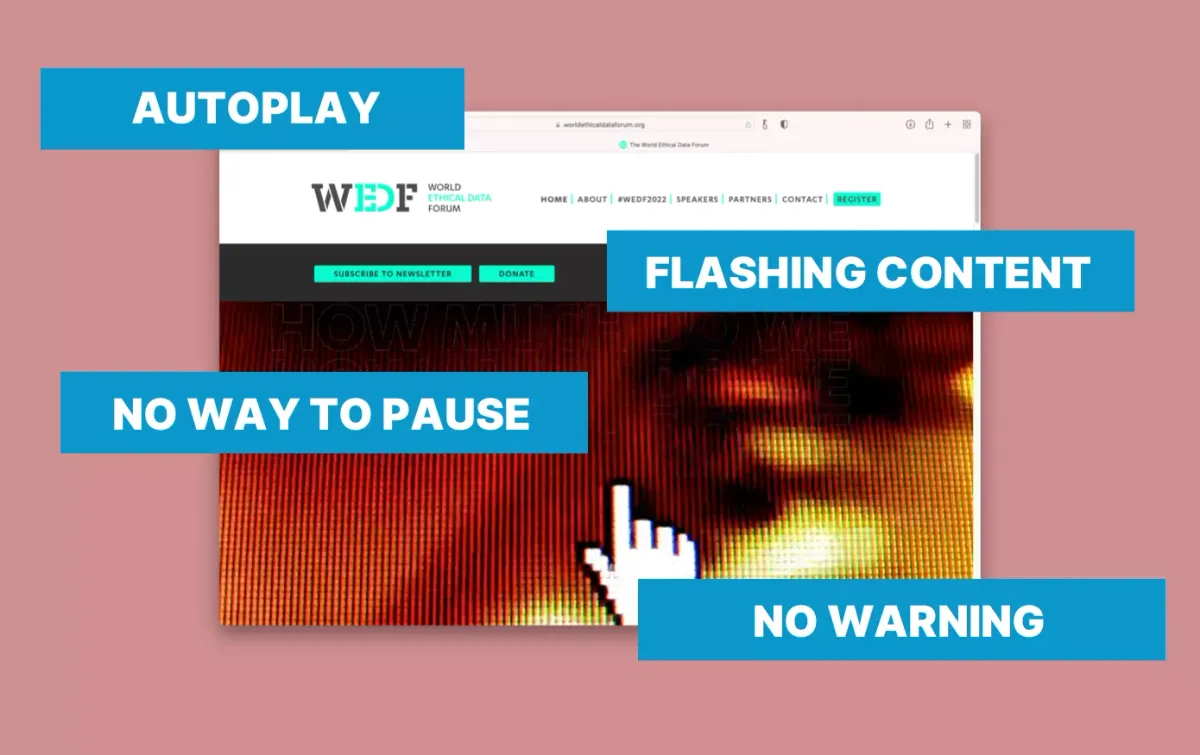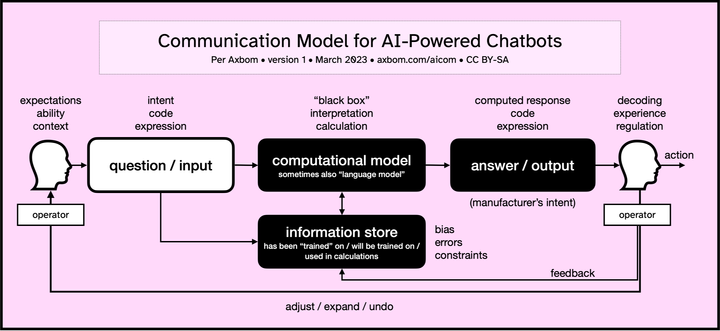Flashing content that can trigger seizures
World Ethical Data Forum autoplays a video at the top of their page that can trigger photosensitive epileptic seizures

Someone recommended the conference World Ethical Data Forum to me. While the event looks interesting, that is not what caught my attention. Their website showcases one of the most dangerous displays of flashing content I've seen in a while, putting people with photosensitive epilepsy at risk. Something many people aren't aware they have.
To my students I often say that this is one of the easiest recommendations in the Web Content Accessibility Guidelines to get right. Just don't make content that flashes really fast.
Guideline 2.3 Seizures and Physical Reactions: Do not design content in a way that is known to cause seizures or physical reactions.
Some organisations didn't get the memo yet.
I'm certain you've come across warnings about seizures when watching films. Here is an example:

These warnings can be worded differently but the idea is clear: If you are in the risk group, you have been warned. Hopefully you've had time to see the warning. Hopefully you are old enough to read it. Hopefully you are aware you are in the risk group.
I always wonder why many films unnecessarily have this type of content when they are obviously aware of the potential harm.
On a website there is rarely a warning
What World Ethical Data Forum does is play an extremely busy video when entering the website, at the top of the page, with no way of stopping, pausing or slowing it. And no warning. Click a link to the website and you're at risk.
This is the first paragraph from World Wide Web Consortium's explanation for guideline 2.3 on Seizures:
Some people with seizure disorders can have a seizure triggered by flashing visual content. Most people are unaware that they have this disorder until it strikes. In 1997, a cartoon on television in Japan sent over 700 children to the hospital, including about 500 who had seizures. Warnings do not work well because they are often missed, especially by children who may in fact not be able to read them.
What the warnings do is seemingly provide a way out from taking responsibility. But it truly doesn't remove the danger if the people watching aren't aware they have photosensitive epilepsy. Or if they miss or can't read the message.
The World Ethical Data Forum doesn't provide a warning before autoplaying the video on their site. It's unclear if they are aware. It's unclear if this is a conscious decision.
To give you an idea of what is going in the video I'm talking about, I've cut out two short segments from the film and here I'm playing them at 20% of the original speed. This means that 5 seconds in this video is 1 second in the original video. Even this slowed-down content can be draining, so use the pause button if you feel dizzy.
Avoiding making dangerous content
The organisation Epilepsy Action in the UK provide an informative page on Photosensitive epilepsy and online content. They refer to the WCAG guidelines that web content should not:
- Contain anything that flashes more: than 3 times in any 1 second period or
- Flash below the general flash and red flash thresholds
They also summarise these suggestions from the W3C:
- Reducing contrast for any flashing content
- Avoiding fully saturated reds for any flashing content
- Reducing the number of flashes even if they do not violate thresholds
- Providing a way to stop any flashing content before it begins
- Slowing down live material to avoid rapid flashes (as in flashbulbs)
- Freezing the image momentarily if there are 3 flashes in 1 second
- Dropping the contrast ratio if there are 3 flashes in 1 second
- Allowing users to set a custom flash rate limit
And this last point I of course especially agree with:
If the user is not able to control the flickering, blinking and moving (this includes stopping the content from starting), then the effects should not be used.
The important thing to remember here is that if you have flashing content, seizures can never be completely eliminated since some people are so sensitive.
When posting the type of content that World Ethical Data Forum plays at the top of the start page without warning, consent or control, it's clearly in violation of many of these guidelines.
Weaponization of animated gifs
To give you an idea of how dangerous the phenomenon can be, animated gifs are actually being weaponized to target vulnerable individuals.

In a 2020 Guardian article, people bear witness to being targeted by epilepsy-inducing content:
One person told the charity on condition of anonymity: “I inadvertently viewed one of the posts and it triggered a simple partial seizure for me. This is not a joke. It is a physical assault on people struggling with epilepsy.”
The question of course remains: why does content like this keep being produced by seemingly benevolent actors? When is it motivated? What is the requirement that considers it okay to put people at risk as long at this content gets to look like this? Indisputably, frequently flashing content is also extremely annoying for a great many more people than will actually be dangerously physically ill from it.
In many countries it is illegal to discriminate against people with disabilities. If someone has a seizure as a result of your content, you may be breaking the law.
And no, I won't link to the website. Because I honestly don't know if you, or someone else finding this content, are at risk.
I have let World Ethical Data Forum know about these concerns and I truly hope they consider changing the video. I would presume they at least could move it to a completely different section and provide a warning.





Comment